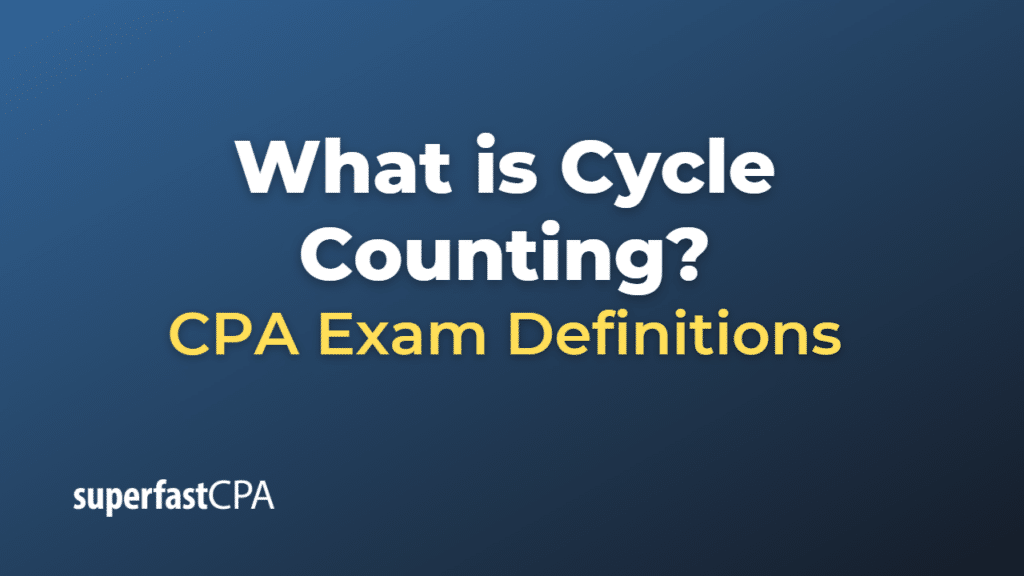Cycle Counting
Cycle counting is an inventory management procedure where a small subset of inventory, in a specific location, is counted on a specified day. Unlike traditional physical inventory counts, which often require operations to shut down, cycle counting is less disruptive and can be done more frequently.
Here’s how it works:
- The inventory is divided into different groups or “cycles”. This division can be done in several ways. One common method is to categorize items based on their value or frequency of movement, often referred to as ABC analysis. “A” items are high-value and/or fast-moving, “B” items are mid-value and/or mid-frequency, and “C” items are lower-value and/or slow-moving.
- Each day (or other regularly scheduled interval), a count is conducted of one or more groups. The goal is to count all items within a specific cycle before starting the cycle count again.
- Discrepancies between the counted inventory and the inventory levels in the company’s records can be identified and corrected on a regular basis, improving the accuracy of inventory records.
The benefits of cycle counting include:
- Improved inventory accuracy: Regularly counting and correcting inventory records helps to maintain accuracy.
- Reduced disruption: Because only a small subset of inventory is counted at a time, operations can often continue with minimal disruption.
- Identified trends or issues: Regular counting can help identify recurring problems or trends, such as certain items that often have discrepancies.
Overall, cycle counting is a proactive inventory management strategy that can help companies maintain accurate inventory records and improve their operational efficiency.
Example of Cycle Counting
Let’s consider a large warehouse that stores thousands of different items for a retail company. The company decides to implement cycle counting using ABC analysis.
- ABC Analysis: They categorize their inventory into A, B, and C items. A items are their most valuable or fast-moving items, B items are of moderate value or turnover rate, and C items are the least valuable or slowest-moving.For example, high-end electronics like laptops might be A items, home appliances like toasters might be B items, and low-cost items like dish towels might be C items.
- Setting the Schedule: The company decides to count A items every month, B items every quarter, and C items twice a year. This is because A items are high-value or fast-moving, so accurate inventory records for these items are critical to prevent stockouts or overstocking.
- Cycle Counting Process: On the first Monday of each month, they count all the A items in the warehouse. They find that they have 50 laptops in stock, but their records show that they should have 55. They investigate and find out that there was a data entry error – 5 laptops that were sold were not deducted from the inventory records. They correct the records.
- Continuing the Cycle Count: They continue this process for all A, B, and C items according to the set schedule. By frequently counting and adjusting their records, they can maintain high inventory accuracy and quickly spot and correct any issues.
In this way, the retail company can manage their inventory effectively, reducing the chances of both stockouts (which could lead to lost sales) and overstocking (which ties up capital and takes up storage space).













